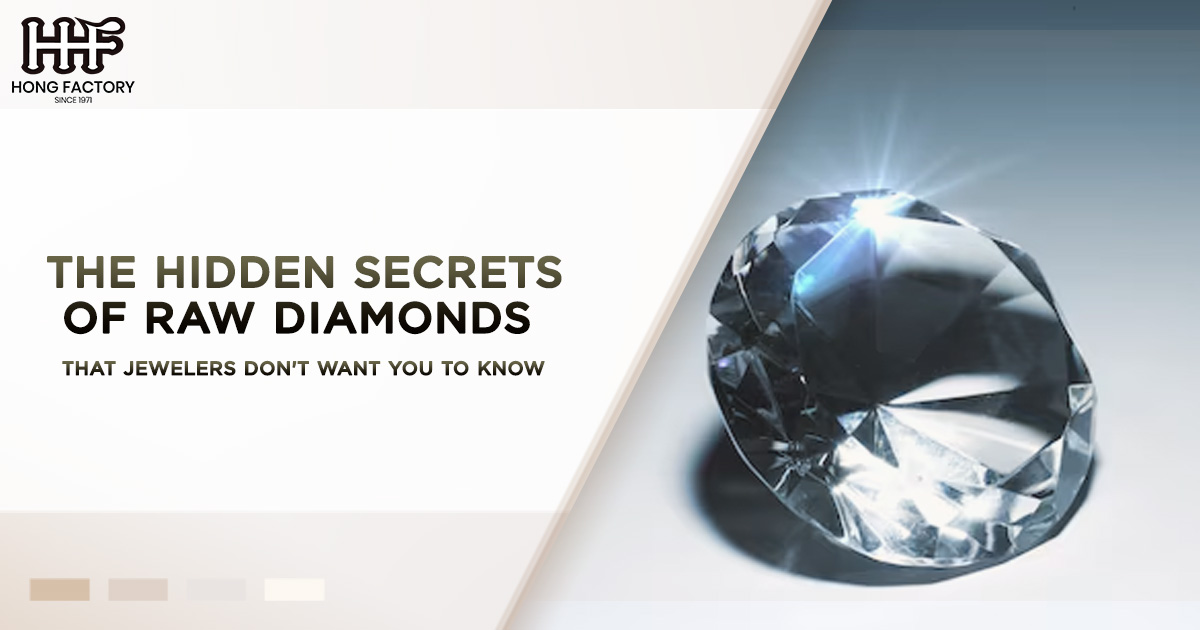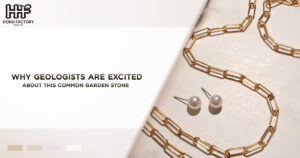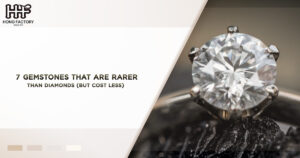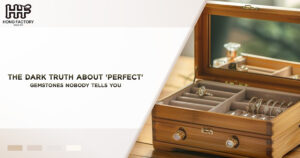When you think of diamonds, your mind likely conjures images of sparkling, perfectly cut stones. However, beneath the glamour of polished gemstones lies a lesser-known marvel – raw diamonds. These uncut gems are becoming increasingly popular for their natural, untouched beauty. But what are raw diamonds, how do they form, and why are they gaining favor over cut stones? Let’s dive into the fascinating world of natural diamonds and uncover the secrets jewelers might not want you to know.
What Are Raw Diamonds?
Raw diamonds, also known as uncut gems or rough diamonds, are stones in their natural, unpolished state. Unlike the dazzling brilliance of cut diamonds, raw diamonds have a more understated beauty, with irregular shapes, earthy textures, and a muted glow. They are not subjected to the cutting and faceting process that enhances a diamond’s sparkle, making them a purer reflection of nature’s craftsmanship.
Because of their untouched form, each raw diamond is one-of-a-kind. Their imperfections—ranging from cloudy inclusions to unique external shapes—are part of their charm, appealing to those who value authenticity and individuality.
The Formation of Natural Diamonds – A Geological Miracle
The story of a diamond’s creation is nothing short of extraordinary. To fully appreciate raw diamonds, it’s important to understand how they form deep within the Earth. The process spans billions of years and involves intense geological conditions. Here’s how diamond formation unfolds
- Carbon Under Pressure
Diamonds are made of carbon, one of the most abundant elements on Earth. When carbon atoms are subjected to intense heat (about 1,650–2,370°F) and pressure (over 725,000 PSI) in the Earth’s mantle, they bond in a unique crystalline structure. This process takes place about 90–120 miles below the Earth’s surface.
- Volcanic Eruptions Bring Diamonds to the Surface
Over millions of years, volcanic eruptions force diamonds upward through kimberlite and lamproite pipes—geological conduits that reach Earth’s surface. These eruptions are rare and violent, making diamonds a scarce and precious resource.
- Mining and Sorting
Once at the surface, diamonds are extracted through mining operations. Raw diamonds are sorted based on their quality, size, and potential for cutting. Some remain in their natural, uncut state, while others are shaped into the glittering stones we see in jewelry stores.
This natural journey gives raw diamonds their allure. Each one is a time capsule, representing billions of years of Earth’s history.
Why Raw Diamonds Are in Demand
While polished diamonds have long been the standard of luxury, uncut gems are becoming increasingly popular. Here’s why
- Unique Aesthetic
Raw diamonds have an organic, earthy charm that sets them apart from traditional polished stones. Their rugged surfaces and irregular forms appeal to those looking for one-of-a-kind jewelry that reflects their individuality. Unlike cut diamonds, no two raw diamonds are ever the same.
- Eco-Friendly and Ethical Appeal
The diamond industry has faced criticism for its environmental impact and concerns over conflict diamonds. Raw diamonds are associated with a more sustainable approach because they require less energy-intensive processing. Additionally, many jewelers offering raw diamonds prioritize ethical sourcing, ensuring they adhere to certifications like the Kimberley Process.
- Affordability
One of the most attractive aspects of raw diamonds is their affordability. Since they don’t go through the cutting and polishing process, raw diamonds are often less expensive than their cut counterparts. This makes them a great option for budget-conscious buyers who still want the beauty of a diamond.
- Symbolism and Meaning
Raw diamonds symbolize authenticity, individuality, and the beauty of imperfection. For couples seeking engagement rings, these stones serve as a metaphor for a love story that is unique and unpolished yet undeniably strong.
- Creative Jewelry Designs
The irregular shapes of raw diamonds open up endless possibilities for innovative jewelry designs. Designers often pair them with unconventional materials like oxidized metals or rustic gold, resulting in striking, contemporary pieces.
Raw Diamonds vs. Cut Diamonds – A Comparison
The main difference between raw diamonds and cut diamonds lies in their processing and appearance. Cut diamonds go through a labor-intensive process of cutting, faceting, and polishing to enhance their brilliance and sparkle. This process maximizes their ability to reflect light, giving them the dazzling appearance most people associate with diamonds.
In contrast, raw diamonds remain in their natural state. Their surfaces are unpolished, and their shapes are often irregular. While they lack the fire and brilliance of cut diamonds, their appeal lies in their understated glow and raw beauty.
Another notable difference is how they are evaluated. Cut diamonds are graded using the “Four Cs” (cut, color, clarity, and carat weight), while raw diamonds are valued for their unique characteristics, such as natural shape, texture, and overall aesthetic.
The Secrets Jewelers Don’t Tell You About Raw Diamonds
Jewelers often emphasize the perfection of cut diamonds, but there are some little-known truths about raw diamonds that they might not reveal
- Higher Markups on Cut Diamonds
Polished diamonds are priced higher because of the labor and expertise required to cut and polish them. Jewelers can earn larger profit margins from cut stones, which is why raw diamonds are less frequently promoted.
- Durability Is the Same
Both raw and cut diamonds are made from the same material—carbon—and rank a 10 on the Mohs hardness scale. This means raw diamonds are just as durable as their polished counterparts.
- Growing Popularity
Raw diamonds are becoming trendy, particularly among younger generations who value sustainability, individuality, and affordability. Jewelers may stock more raw diamonds than they advertise, so it’s worth asking about them.
- Custom Jewelry Options
Raw diamonds offer endless opportunities for custom designs. Jewelers can create bespoke pieces that highlight the stone’s natural beauty, making each piece truly unique.
Tips for Buying Raw Diamonds
If you’re considering purchasing a raw diamond, here are some tips to help you make an informed decision
- Look for Ethical Sourcing – Make sure the diamonds are conflict-free by checking for certifications like the Kimberley Process.
- Appreciate Natural Variations – Understand that raw diamonds come in various shapes, colors, and textures. Embrace their imperfections as part of their charm.
- Work with a Specialist – Choose a jeweler experienced in working with raw diamonds. They can guide you through the selection and design process.
- Consider the Setting – Raw diamonds pair beautifully with alternative settings, such as minimalist bands or rustic metals, which enhance their natural appeal.
Conclusion
Raw diamonds are more than just uncut stones—they are a reflection of nature’s artistry and a testament to the Earth’s ancient history. Their unique appearance, affordability, and eco-friendly appeal make them an increasingly popular alternative to traditional diamonds.
Whether you’re drawn to their authenticity, their symbolism, or their creative potential, raw diamonds offer something truly special. As more people seek jewelry that reflects their individuality, these uncut gems are finding a place in the spotlight.
So, the next time you consider investing in a diamond, don’t overlook the raw, untamed beauty of natural diamonds. You might just discover a hidden gem that speaks to your soul.




